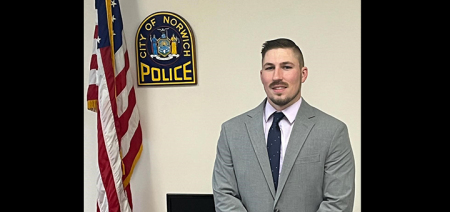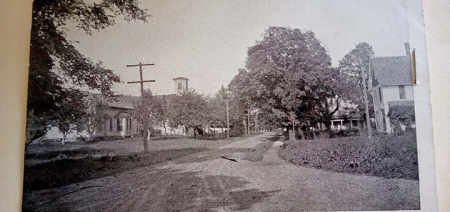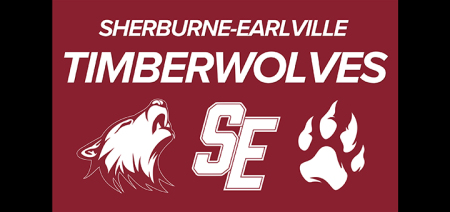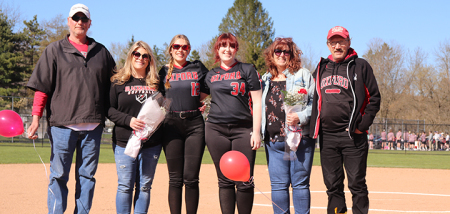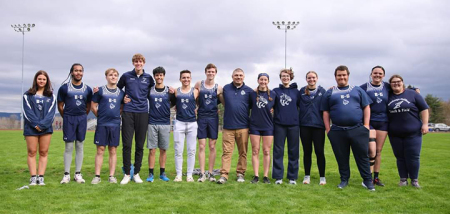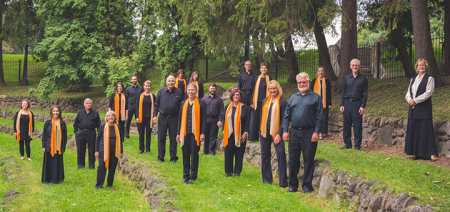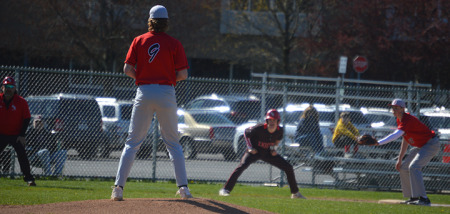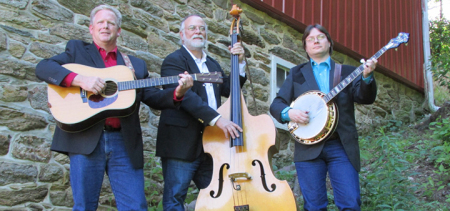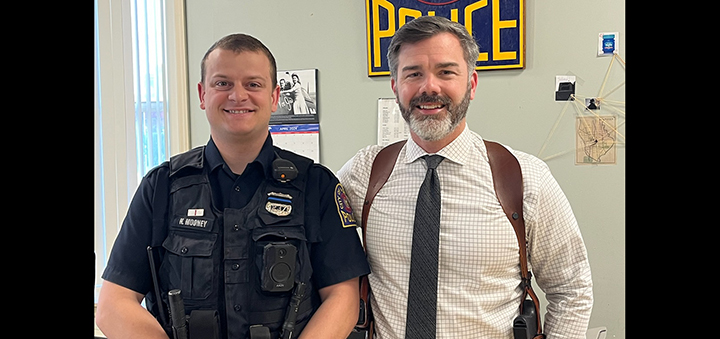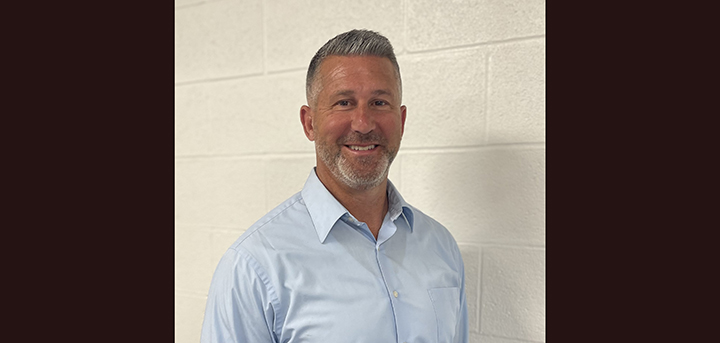Y Giants 15: The Conclusion: Where Are They Now?
Published:
November 2nd, 2007
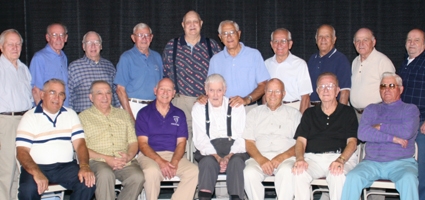
By Jim Dunne
The Norwich Y Giants played for 5 years, from 1947 through 1951. They played the top teams in central New York, losing only 10 games of 45, or 6 of 38 in the first four years. One thing that the players had in common was that almost all of them served in the military. In the early years of the team’s existence, they were World War II veterans, who played as Giants after they returned home, while in the last 2 or 3 years, they played semi-pro football right after high school and then enlisted to serve during the Korean War.
Jack Lee was no doubt the most famous of the early group, having received the Distinguished Service Cross, the Nation’s second highest award, for rescuing several high-ranking French officials who were being held by the German SS in a medieval Austrian castle. During the incident, Lee, a tank commander and first lieutenant, fought his way into the castle and demanded the surrender of the SS colonel in command. The colonel proudly stated that he would not surrender to a mere lieutenant, so Lee drew up papers promoting himself to captain (a rank he officially received a month later). The entire rescue was written up in the Saturday Evening Post, and a fellow platoon leader later wrote, “The article did not give enough credit to Jack Lee. He initiated it, he led it, and he was responsible for its success. I know. I was there.” Jack Lee was bigger-than-life in many respects, and lived life to its fullest. He died of natural causes in 1973, at the age of 55.
Of the other six founders of the Giants, two, John Kelly and Harold Barnes, retired after careers with the phone company, and live active lives here in Norwich. Kelly is a bailiff at the Courthouse, and is still looked upon as “the captain” by his former teammates. Babe Barnes and his three brothers and two sisters all served in the military, and all are still living. The other two who played for the Giants, Richie and Don, worked for the Public Loan Co. and the phone company respectively, and each retired in the community where his work last took him, Richie in Cortland and Don in Concord, NH.
The other four founders, Burt Palmatier, Jim Kelly, Bob Palmer, and Bob Crittenden, have passed away. Palmatier, the captain of the NHS 1937 team, served in the Army during all of WWII, then played for the Giants for the first three years. He married and moved to California shortly after, and died there of ALS in 1972. His ashes were interred in the South Plymouth cemetery, where there is no marker. Jim Kelly was called (with good reason) “the hard-luck kid” by his brother. He married twice, had several children, worked at Victory Markets, and passed away from cancer in 1975. Plumb Palmer had married during the 1950 season and planned on retiring from football, but came back to kick in 1951, making him one of only two who played all five seasons. He worked at the aspirin plant at Woods Corners, retiring early for health reasons, and died in 1979.
Bob “Percy” Crittenden, quarterback and coach, was the other 5-year man. He had spent one year at Syracuse, along with John Kelly and John Pierson, after serving during the war. He worked at The Pharmacy and in Syracuse while he continued to take college courses. His desire was always to teach, and in 1961 he found a superintendent, Bob Bennett in Greene, who would hire him despite his lack of credentials. He taught there until he retired in 1987. Sadly, he passed away a short time later, on January 1, 1989. His younger brother Don also became a teacher in Greene in 1965. Don’s time there was cut short when, on April 29, 1970, he died suddenly of a heart attack at the age of 41. The brothers were popular teachers, and Don’s death at such a young age was a blow to the community. Their respective widows, the former Alice Davis and Marjorie McDowell, continue to live in Greene.
Ed Weed, the steady lineman who played the first four years, and Bob Ryan, the assistant coach for the last three years, both ended up coaching at Rome Free Academy. In fact, they graduated from Norwich together, majored in physical education at Ithaca College together, and when Weed got a job in Rome, he called Ryan when another position opened up. There they married, raised families, and retired. They remain good friends to this day. Ryan says that all during his coaching career he emulated his old mentor, Kurt Beyer, doing his best to teach as much about life as about sports.
Don McGraw, “the king of the pass-catchers,” returned to Norwich after serving in Korea and went to work for the phone company. He advanced steadily, and became a vice-president of Continental. He retired to Arizona, where he died of a rare kidney tumor in 1994, ten days shy of his 65th birthday. McGraw’s sister, Barbara, married Mike LaCava, who played in the backfield during the Giants’ final year. LaCava had already graduated from Broome Tech, where he majored in chemistry, starred in basketball, and was co-author of the school’s alma mater. He then served in Korea and Japan for three years, returning to obtain his teaching degrees from Albany and Syracuse. In 1957, he began teaching science in Cooperstown, where he also coached football and basketball. He drowned in a tragic accident while fishing on Otsego Lake in December of 1979. Mike was 48.
Several of the men who played under Jack Lee in the Giants’ first two years live in Norwich and are known to many. Bill Currie, named by John Kelly as “the best pulling guard I ever ran behind,” and Ang Muserilli, player and manager, both worked at the post office. Bob Hall worked at Norwich Pharmacal and became known as a pretty decent golfer. Bob Figary worked at GLA and its successors. Jack Frink became a veterinarian. Walt Tracy returned to Norwich to retire. Dick Carnrike and his brother-in-law, Don Collier, electricians both, still live in Norwich, where the latter does his best to maintain his crusty reputation.
Bob Conron, who played at Syracuse and then for four years with the Y Giants, receiving the first MVP award in 1948, also stayed in Norwich. One of several players to marry after the 1950 season, he took over the family plumbing business, and he and Etta raised six children. His four boys all played football for Norwich – son Mike being one of the finest linebackers to ever play for the Purple. Diz, a popular and gentle man, died of a heart attack while on the job in 1983, at the age of 56.
Several others who played in the early years for Coach Jack Lee have also left us: Cliff Frink in 1967, Bernie Thompson in 1968, Chuck White in 1976, Vincent Meyers in 1977, Chick Clark in 1981, Harry Thompson in 1985, Jim Kennedy in 1986, John Blood and Andy McMullen in 1995, Buff Magistro and Rack Natoli in 1997, and Fran Spadaro in 2002. McMullen, who attended Hobart while he played for the Giants, worked in the pharmaceutical industry and was a marketing executive for Norwich Pharmacal for several years. Spadaro was a school administrator in Enfield, NY.
Some early players are now living elsewhere. Sam DiNoto, in an idyllic story typical of the era, was captain of the 1945 Tornado and married the head cheerleader, “Dolly” Spadaro. Sam became manager of the Victory store in Bainbridge, where he still lives. John Benenati, who played for both the Tornado and the Giants in 1947 wearing the same uniform (#70), enlisted in the newly-named Air Force the same year and then played for his base team in Montana. He retired as a chief master sergeant after 30 years, having obtained a degree by attending seven different colleges. He worked for the Virginia department of taxation, and now lives in retirement in North Carolina. Sam Sastri, now retired in Florida, saw service during the war in the Navy. He then worked for several years for the Bluebirds in Norwich, Sherburne and Hamilton, finally opening his own restaurant in West Eaton, which he ran with his brother Tony for ten years. Julian Smith became a state trooper in the Utica area.
Dick VanDeusen, the outstanding lineman and punter who made the trip up from Allentown each week for the Giants’ first three years, went on to graduate school after his graduation from Muhlenberg in 1950 and received a PhD in chemistry from Buffalo. He had served in the Army Air Corps during the war, and so became a research scientist for the Air Force. He retired to Colorado, where he still skis regularly. Bill Crawley, who was selected by Coach Beyer as the best all-around athlete of the class of 1944, played with the Y Giants in 1948. He became a professor of architecture at the University of Utah and authored a book on earthquakes. He lives in Salt Lake City in retirement.
The stories of the men who played with the Giants in the later years, 1949 through 1951, are also varied. Tragedy befell a few before they reached 30, with car accidents claiming the lives of Ray Turner, the tough lineman from Sherburne, in 1955, and Carl Winner of Oxford in 1962. Frank Rodiquenzi, the crooner who entertained at the 1949 banquet, enlisted in the Air Force after the 1950 season, then attended Temple in Philadelphia, where he died under unknown circumstances in 1959. Others from the later years who have left us are Mike Rotundo, who died at 44 in 1975 following heart surgery, Ed Gadamowitz in 1973, Dick Beardsley in 1976, Nick Sylstra and Don Tomaselli in 1990, John Ball in 1993, Mike Champlin in 1994, Fay Cosens in 1999, Loren VanSteinburg in 2005, and Jack Lewis in 2006. Sylstra ran the Guilford Dairy, and Cosens taught and coached in Olean. Ball, a Cornell graduate, became Democratic Party chairman for Chenango County, then taught at Delhi Tech.
Living in Oxford are Dave Seaman, Leonard Quinn, and Ed Winner (who looks as though he could still put on the pads if it weren’t for his bad knees, which he insists are a result of climbing electrical poles, not playing football for 14 years). In Norwich, Tex Haynes, Bob Higgie, and George Podenak are enjoying their retirement years. Larry Figary worked at The Pharmacy for several years before moving to California, where he still lives. Two one-game stars excelled academically, with Horace Ward becoming a dentist and Deac Haynes earning a PhD. Also in Norwich is Fred Mirabito, the youngest of 5 brothers who were all great athletes. Fred married the girl who didn’t want to cross that bridge in Newport, and took time away from his insurance business to serve Norwich as mayor from 1974 to 1982. George Echentile, a New Jersey boy who made Norwich his home town and became to a younger generation what Kurt Beyer was to an older, had a swimming pool named after him too. George retains his muscular physique, and welcomes former students and athletes who stop in to thank him for his tutelage and example. His wife Betty says that her memories of the Y Giants years are all good ones – the thrilling victories and the parties at Randall’s afterward.
John Pierson, who played semi-pro ball for both Oxford and Norwich, worked at Scintilla and was transferred to Jacksonville, where he lives in retirement. Frank DiNoto had a varied career as a businessman and college advisor, and now lives in Fishkill. Paul Owens recently returned to Norwich for his 60th NHS reunion. He had already graduated from the Forestry School at Syracuse when he played for the Giants in 1951, and after a year in Korea and a degree in business, he worked in the insurance industry, retiring in Butler, Pa. Ezra “Red” Horton made a career of the Air Force, where he taught Judo and was a national champion. He lives in Colorado. Ken Meade worked for the phone company, then became a labor contract negotiator. After his first wife and the mother of his 8 children died, he married his brother-in-law’s widow, a native of Iceland, and they spend half of each year there. His brother Charlie worked for the post office in Willow Grove, Pa. and retired there.
After his year with the Giants, Tony Liberatore enlisted in the Army and played football in Germany, then graduated from the Forestry School at Syracuse, and worked his whole career for a paper company in Pennsylvania, retiring as an executive. A collector of old Hudson cars, he never tired of visiting Norwich. He passed away in 2005.
John “Buddy” Seaman had served in the Army, come home to manage the Victory store in Unadilla, then enlisted in the Air Force when Korea came along. He became proficient in foreign languages and served in several countries on the staff of the Air Force attache. He retired as a senior master sergeant. The girl he married, Shirley Tucker of Oxford, did not even know him when he starred for the Y Giants, and so is proudest of his service in the Air Force and his 15-year career as the very popular manager of a country club in the Dayton, Ohio area. When he was diagnosed with prostate cancer at the age of 57, the members of the club honored him with a testimonial dinner before he passed away in 1985. His sons were outstanding football players in Ohio.
John Ebovicz, who had the unusual honor of captaining the Purple gridders when he was only a junior, died in Florida just a week before this series of articles began to appear. That “Ebo” was willing to share the story of his staggering around the Y gym (with a concussion) after the Syracuse game is an indication of the man he was: one of Norwich’s greatest athletes – who was humble enough to laugh at himself. A great guy, he will be missed.
One opponent should be mentioned. Of the six losses inflicted on the Giants during the first four years, three were the work of Gino Guidici, quarterback of the Endicott Northside Athletic Club. Guidici died this past spring. His daughter, Fran Nash, lives in Norwich. A few players have defied efforts to discover what happened to them: Frank Cline, Ray Clark, Don Brown, Ed Taylor, Ray Lowe, Karl Winter, Bob Thomas, Dick Storrer.
Probably half of the Y Giants players, some of the greatest athletes Norwich has produced, are still with us. When asked what they consider their most important memories, some mentioned other players and some mentioned Kurt Beyer, Stan Georgia, Perry Browne and Bob VanTine. However, several said that what they remember most proudly is what they called “the Norwich spirit.” It was an intangible that carried over from high school to the Y Giants, because it involved the entire community. Beyer, in a brief essay in the 1953 Purple football program, used the exact same phrase in announcing plans for the first Homecoming Game. It is appropriate to close this series with a quote from it.
This fall Norwich High School wishes to pay tribute to the Alumni, particularly those who have made a contribution to the splendid, vital feeling we call “Norwich Spirit.” Intangible, but definitely present, it is a vital factor in the athletic contests of the school and requires that every athlete will give his all-out effort in an attempt to win the game. It also requires that loyal Norwichites in the stands will actively back their cohorts on the field with cheers and songs.
The history of “Norwich Spirit” is difficult to trace but undoubtedly goes back to the late 1890’s when football made its start and the courageous battled without benefit of pads, crowds, cheerleaders, officials, coaches, and other factors a part of the picture today. To mention names would be unfair because we would be certain to miss vital contributors. Each of you alumni can think of several whose contribution to “Norwich Spirit” is a living memory in your life.
We are proud of the contribution of the alumni and are anxious to have them continue to feel they are a most definite part of the school program today. Your loyalty at games and other school activities is definite proof of your constant interest. We hope you will always feel you are a part of our “dear old Norwich High.”
Comments
